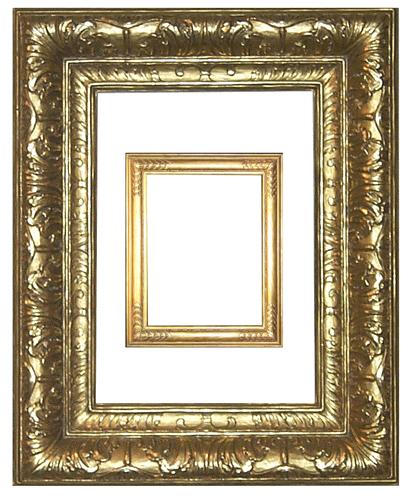Frames of Reference
LEXUS.MSN Luxury for Living
By Nancy A. Ruhling December 2003
Eli Wilner likes to look at the big picture, and for him it’s not the artwork but the frame that surrounds it. “The frame is the soul of the painting,” he declares. “It is a work of art that is a gate to the world of the painting.” During the last two decades, Wilner, aka Mr. Frame, has elevated the antique picture frame to an art form, and today his vintage and replica frames are hanging in many of America’s most important institutions, including the White House and the Metropolitan Museum of Art.
“The best picture frames, many of them designed by people like James McNeill Whistler, Louis Comfort Tiffany, and Stanford White, are equal in value to other decorative arts – the finest carpet or the finest piece of furniture,” he says. Today, thanks largely to Wilner, antique picture frames sell for $1,500 to $300,000. (The record – $947,100 – belongs to a late-17th-century amber frame sold by Sotheby’s London office in 1990.)
Wilner became a frame-ophile in the early 1980s, when major museums, including the Met, routinely were throwing away old picture frames as part of a campaign to “modernize.” For him, all that glittered was gold, and he rode up and down Madison Avenue rescuing these treasures from the trash and buying “dusty old frames” at upstate estate sales.
In the end, he spent $6,000 and crammed them into his studio apartment. But it wasn’t until one of them fell off the wall and knocked him on the head while he was sleeping that he got the bright idea of becoming a frame dealer. That’s when he opened Eli Wilner & Co., his Manhattan frames-only gallery, and started doing avant-garde things with them. He hung them on the walls empty, one inside the other, like sculptures; he put mirrors in them and turned them into display trays, coffee tables, and room dividers. Sometimes, he even went so far as to put paintings in them.
Suddenly, the same museums that had tossed out the vintage frames were at Wilner’s gallery virtually begging to buy them back. By 1990, antique frames had made such an impression in art circles that Wilner sponsored the world’s first empty-frames exhibition-at the Met, no less. More recently, he has produced two books: The Gilded Edge: The Art of the Frame and Antique American Frames: Identification and Price Guide.
“While the best examples of frames are still those from the 19th and early 20th centuries, frames from the 1930s and 1950s are just coming into their own,” Wilner says, “and this will be the next collecting field.” A trio of big shows – one on George Inness at the National Academy of Design in Manhattan through December 28; one on Sanford R. Gifford at the Met through February 8; and one on the frame collection of Justine Simoni to be exhibited at the Pensacola Museum of Art from May 21 through July 17, 2004 – will make the public even more aware of Wilner’s artful frame of reference.
At 47, Wilner says he still has much work to do in the frames department. “I have no intention of resting on my laurels,” he says, “even if they’re carved and gilded.”

